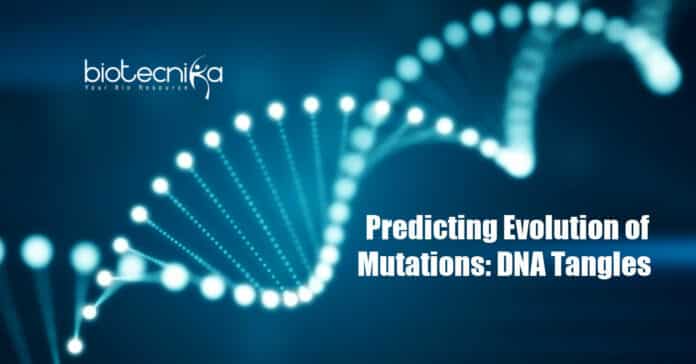DNA tangles can help predict the evolution of mutations
Researchers from the University of Bath and the University of Birmingham studied how two strains of the soil bacteria Pseudomonas fluorescens (SBW25 and Pf0-1) evolve. When the team removed a gene that allows the bacteria to swim, both strains immediately evolved the capability to swim again, however, in distinct forms. These study outcomes published in Nature Communications throw light on the prediction of how bacteria and viruses evolve.
The team stated that the mutational hotspots have the potential to ascertain evolutionary outcomes and make evolution repeatable. Hotspots are the result of multiple evolutionary forces, including mutation rate heterogeneity, which is often difficult to determine. According to the study, a small number of silent mutations, a near-deterministic genetic hotspot can be made and broken.
To understand the differences observed, the team correlated the DNA sequences of the two strains. They discovered a region in predictably mutated SBW25 strain, where the DNA strand looped back on itself, making a hairpin-shaped tangle.
Tiffany Taylor, Ph.D., a research fellow at Milner Centre for Evolution, stated that the experiments reveal that they were able to form or remove mutational hotspots in the genome by modifying the sequence to create or block the hairpin tangle. This demonstrates that, while natural selection remains the most significant determinant in evolution, there are other determinants at work as well.
Knowing the location of potential mutational hotspots in bacteria or viruses could help predict the mutation of microbes under selective pressure.
This knowledge can help researchers better learn the evolution of bacteria and viruses, which can aid in the development of vaccines against new disease variants. It can also help in understanding antibiotic resistance in microbes.
Just like several other interesting discoveries, this was found by chance, stated James Horton, Ph.D., a postdoc, Milner Centre for Evolution. As they were looking for the mutations called silent mutation – as they didn’t change the resulting protein sequence, at first, they didn’t know they were so significant.
Though, their findings essentially call into question the understanding of the purpose of silent mutations in adaptation.
Also Read:
-
One-shot Sputnik Light Shows 70% Potency Against Delta SARS-CoV-2
-
Understanding DNA Repair Mechanism Might Lead To Improved Cancer Therapies
- American Surgeons Successfully Transplanted Pig Kidney To A Human Patient
-
How Brain Cells Repair Their DNA Exposes ‘Hot Spots’ Of Aging And Disease
Download Biotecnika App for more Updates on Life Sciences, Job vacancies, CSIR-NET, GATE, and a lot more.
Keywords: DNA Tangles Can Help Predict Evolution Of Mutations.



